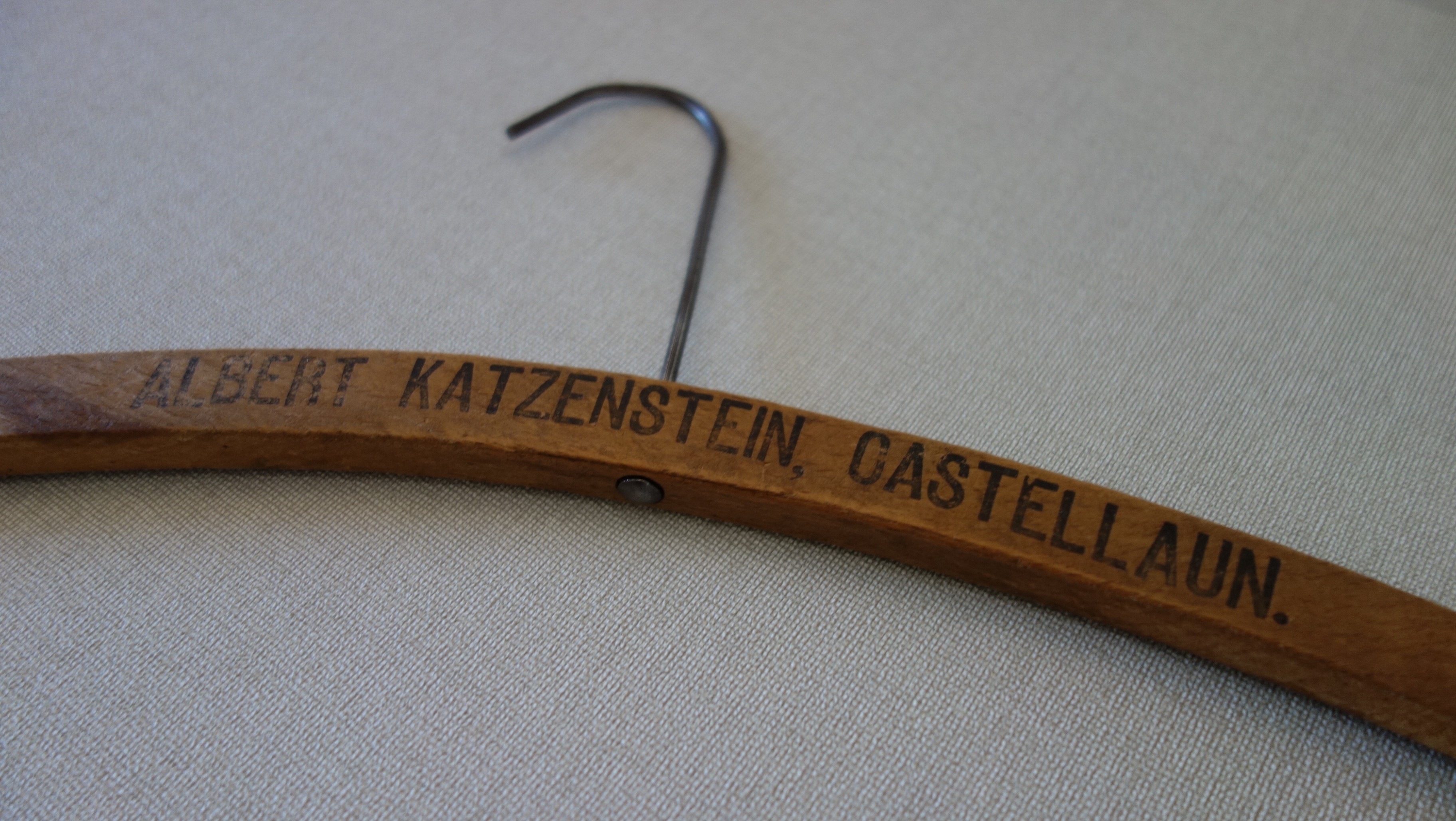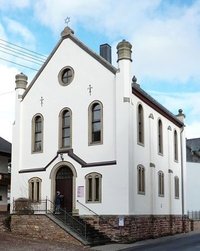This clothes hanger made of beechwood and cut in a crescent-shape is unpainted with a simple, straight metal hook and bears the printed advertising „Albert Katzenstein, Castellaun“. It was common for businesses to give its customers a clothes hanger as a promotional gesture when they purchased a product. It is one of the few items remaining today that bear witness to the destruction and Aryanization inflicted upon Jewish textile businesses. The collection at the former synagogue in Laufersweiler includes several other clothes hangers from Jewish businesses out of the region.
Albert Katzenstein moved from MĂĽnden (near Hanover) to Kastellaun at the beginning of the 20th Century. He married Jenny Rosenthal in 1902 and their first child, Ella, was born only one year later. She was followed by Otto (1904), Julius (1907), Gertrud (1913), Hildegard (1916) and Kurt (1919). The family purchased property that included a residential and commercial home on the MarktstraĂźe in 1905. Albert Katzenstein operated a manufactured goods business there until 1939, which comprised an electrically powered furniture workshop and warehouse, but also offered bicycles and sewing machines for sale.
Katzenstein’s life changed forever once the National Socialists assumed power, however, when his family was confronted with financial problems in the face of calls to boycott Jewish businesses. Another heavy blow came on the “Reichspogromnacht” on the 10th of November 1938: Their house was damaged, Albert and Julius Katzenstein spent four days in „Schutzhaft“ (protective custody) in Kastellaun’s jail and Kurt Katzenstein was deported to the Buchenwald concentration camp.
The effects of the Pogrom Night experienced by Katzenstein’s children were reason enough for them to leave Germany: Hilde emigrated to England in April 1939 and lived with her brothers, Kurt and Julius, in Birmingham. Thanks to her support, Otto and Gertrud were also able to obtain life-saving visas prior to the outbreak of the war.
Meanwhile, Albert Katzenstein still attempted to sell his holdings. He urgently tried to persuade a family friend to take over the property so he could move to Wiesbaden, but this person lacked sufficient resources. The eventual proceeds from the sale were deposited into a blocked account, which meant the family never had access to it.
On the 25th of August 1942, daughter Hilde received a final postcard from Albert and Jenny Katzenstein, written from Wiesbaden with the message that they would be „departing next week“. The couple was deported to Theresienstadt on the 1st of September, then on to the death camp at Treblinka where they were murdered. The oldest daughter, Ella Katzenstein, who did not want to emigrate without her parents, was deported in 1941 from Cologne to the Lodz ghetto. She was then sent to the death camp at Chelmno (Kulmhof), where she was murdered on the 26th of June 1944.
Hilde returned to Kastellaun together with her husband in 1946, where she tried to restore her parents’ former business. She nevertheless found it too difficult to gain a foothold in her old hometown. Bitter disputes with the new owner of their former house, confrontations with die-hard national socialists who would sing anti-Semitic songs at her doorsteps at night, the absence of reparation funds and related financial difficulties ultimately forced her to declare bankruptcy in 1955. She initially moved to Simmern, then on to Koblenz, where she died and was laid to rest in the Jewish cemetery there.
This clothes hanger was gifted to the “Förderkreis” of Synagogue Laufersweiler by Guido Brachtendorf, a private collector from Mörsdorf (Rhein-Hunsrück district).
en

